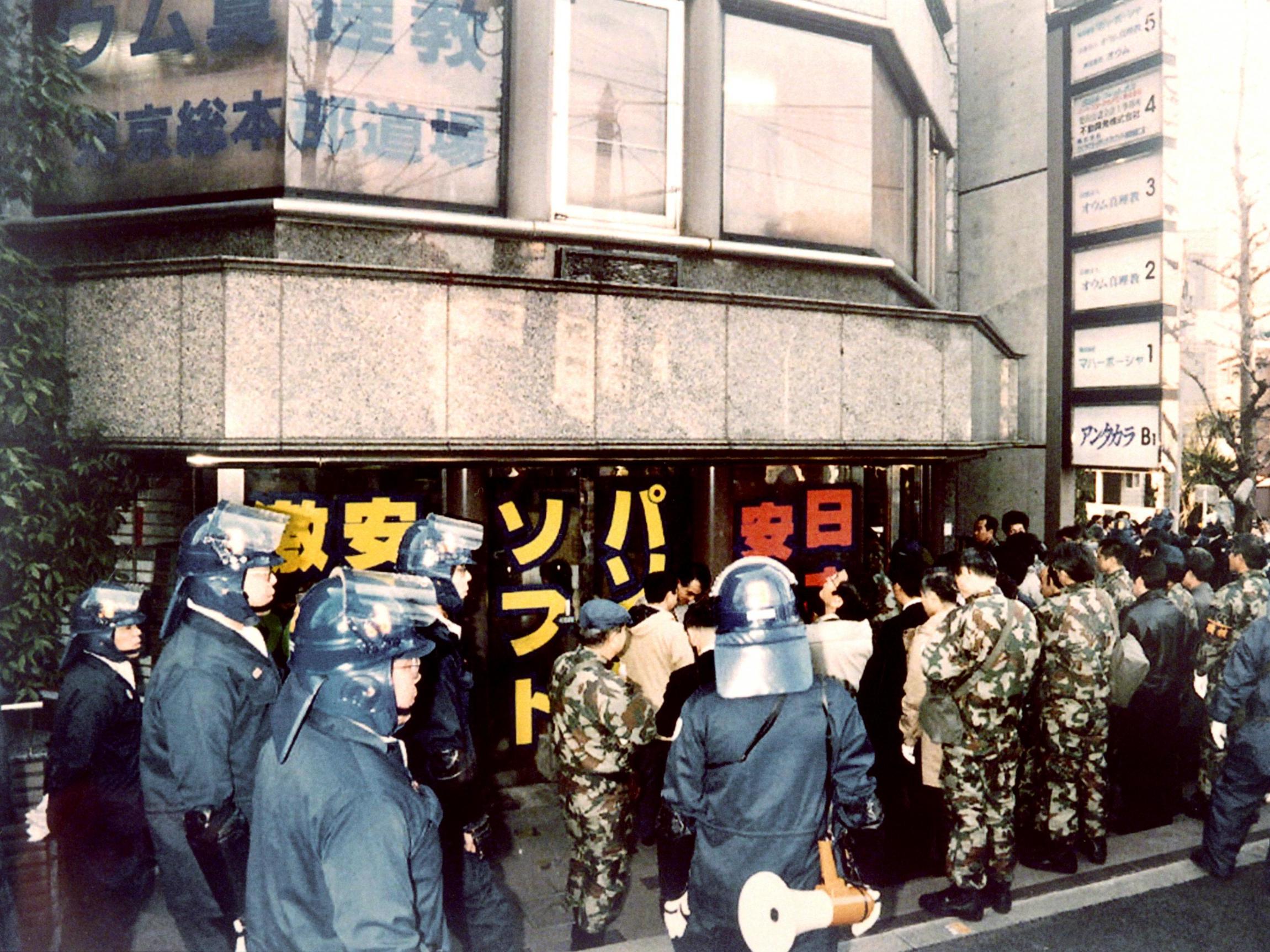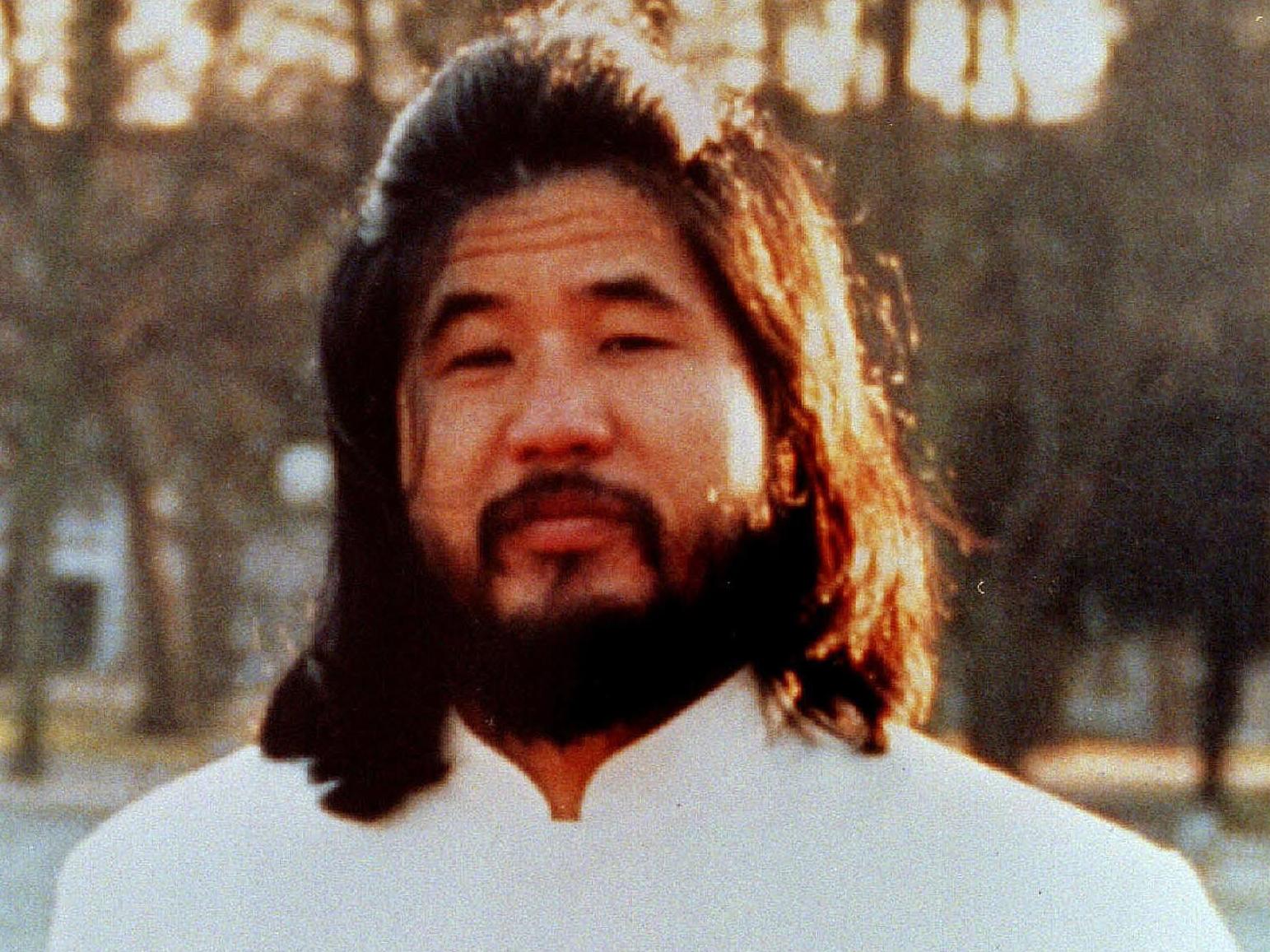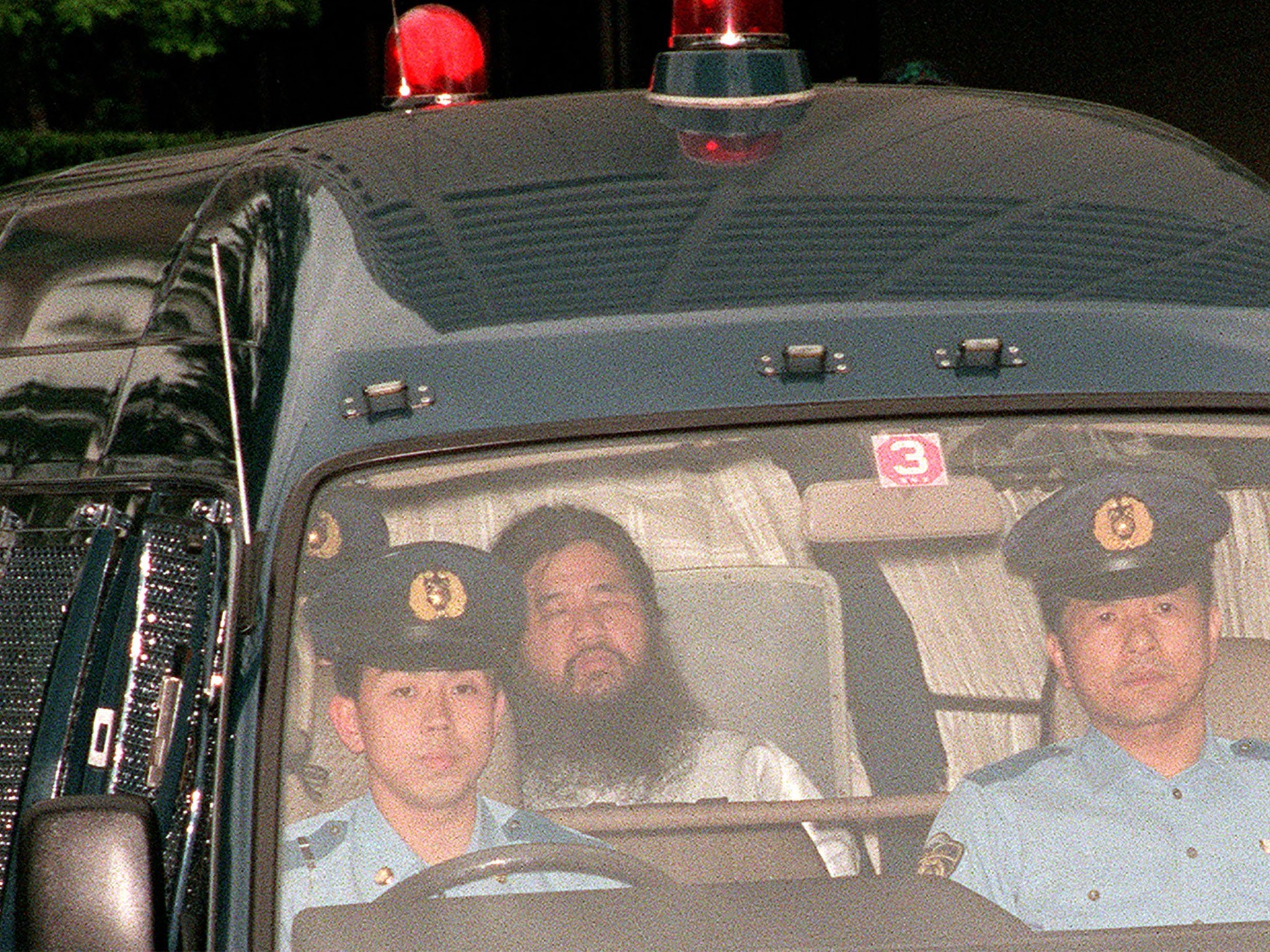Tokyo subway attack 25 years on: How a sinister doomsday cult brought rush hour terror to Japan
Five members of Aum Shinrikyo poisoned commuters with liquid sarin gas in a carefully plotted atrocity masterminded by sect leader Shoko Asahara
Your support helps us to tell the story
From reproductive rights to climate change to Big Tech, The Independent is on the ground when the story is developing. Whether it's investigating the financials of Elon Musk's pro-Trump PAC or producing our latest documentary, 'The A Word', which shines a light on the American women fighting for reproductive rights, we know how important it is to parse out the facts from the messaging.
At such a critical moment in US history, we need reporters on the ground. Your donation allows us to keep sending journalists to speak to both sides of the story.
The Independent is trusted by Americans across the entire political spectrum. And unlike many other quality news outlets, we choose not to lock Americans out of our reporting and analysis with paywalls. We believe quality journalism should be available to everyone, paid for by those who can afford it.
Your support makes all the difference.The sarin gas attack on the Tokyo Metro in Japan took place a quarter of a century ago this Friday, an act of domestic bioterrorism that shocked the world.
Members of the sinister Aum Shinrikyo (“Supreme Truth”) doomsday cult released the lethal nerve agent, originally developed by the Nazis, on 20 March 1995, targeting stations close to the Japanese parliament after they were tipped off to a planned police raid on their compound, plotting the atrocity as a hindrance to the authorities.
The coordinated release of the toxin across three subway lines at the height of rush hour left 13 commuters dead, 50 more severely injured and over 1,000 others with temporary visual impairment.
On a bright springtime Monday morning, five members of Aum Shinrikyo entered the underground system at different points, each wearing surgical masks and carrying one litre packets of liquid sarin, bound up inside newspapers in plastic bags.
To put that in perspective, coming into contact with just one drop the size of a pinhead is enough to kill a healthy adult.
The five also brandished umbrellas with sharpened tips which they used to pierce the packets and release the volatile chemical before exiting the trains and escaping with the aid of designated getaway drivers.
Ikuo Hayashi carried out his attack on the Chiyoda Line, Kenichi Hirose and Toru Toyoda on the Marunouchi Line and Masato Yokoyama and Yasuo Hayashi on the Hibiya Line.
The sight of suspicious puddles and leaking bags quickly caused panic to spread among commuters, many of whom attempted to flee the cars for the escalators while others succumbed to the effects of the stinging fumes.
Several foamed at the mouth, vomited and coughed up blood.
Emergency services personnel delivered 688 people to local hospitals while 5,510 more arrived by their own means.
Despite a huge nationwide police operation to bring them to justice in the incident’s aftermath, it took until 16 May for the group’s leader Shoko Asahara to be traced to a secret room in his Tokyo compound, where he was finally arrested. Officers also discovered the chemicals used by cult member Masami Tsuchiya to concoct the sarin at the facility as well as plans to buy nuclear weapons from Russia.

Another ranking member of Aum Shinrikyo, Hideo Murai, was apprehended prior to this, only for him to be assassinated by a masked hit man before he could be taken into custody. The country’s top police chief was also murdered by a mystery assailant during the course of the investigation.
In the aftermath of the horror, ambulance crews were criticised for their hesitant handling of the situation, as were the subway authorities, who failed to halt several trains despite being informed of the attack underway.
The public were particularly incensed about these systemic failures because Aum Shinrikyo had already used sarin in an attack the previous June, killing eight and injuring more than 500 in Matsumoto by dispersing the toxin from a converted refrigeration truck.
The group had been motivated to carry out its appalling acts because its acolytes believed the apocalypse was inevitable and would be caused by a Third World War erupting between the US and Japan.

Only devotees of Asahara would survive the nuclear Armageddon that would inevitably curtail that conflict and only they would be assured a place at his side in the mythic mountain kingdom of Shambhala.
Asahara was a charismatic but deeply troubling figure who claimed to be the reincarnation of Buddha and able to time travel and would typically preach to his followers wearing bright robes while perched atop a mound of satin cushions.
Aum Shinrikyo acquired the means to orchestrate the devastation, as well as other assassinations, by demanding that all new inductees – many of whom were impressionable young students – hand over their savings to its founder and icon, granting him a small fortune.
He also charged members extortionate fees to participate in spurious rituals, including asking one man for £6,115 in 1988 in exchange for the chance to drink his blood, according to the BBC.
Asahara was born partially blind in Yatsushiro in 1955, the son of tatami mat manufacturers. Known as a bully at school, he graduated and studied acupuncture and traditional Chinese medicine before being convicted of prescribing pharmaceuticals without a licence in 1981.
He became interested in astrology and Taoism and founded Aum Shinrikyo as a yoga school in 1987, basing his teachings on the Vajrayana scriptures and the Bible and publishing his doctrine, Declaring Myself the Christ, in 1992.
His peculiar faith had 10,000 followers in Japan and 30,000 in Russia at the peak of its popularity, operating a compound at the base of Mount Fuji where its members experimented with chemical weapons and other dangerous substances, including NV and Botulinum toxin (better known as Botox).

In 1990, the organisation had sought to gain a legitimate foothold in Japanese society by running candidates in upper house elections but were unsuccessful, a source of intense and lasting bitterness to Asahara who subsequently began lashing out at the public.
After the Tokyo Metro horror, the group resurfaced in 2000, having disassociated itself from Asahara and his methods following his arrest, and rebranded itself as Aleph, paying compensation to the victims of its earlier attacks. They are still regarded with suspicion and their offices in southern Tokyo remain under constant surveillance.
Another smaller group, Hikari No Wa (“Circle of Rainbow Light”), lead by Aum’s former spokesman and Asahara’s successor Fumihiro Joyu, was formed in 2007.
Asahara himself was executed by hanging on 6 July 2018, aged 63, along with six of his accomplices.
His most notorious crime would inspire the novelist Haruki Murakami to write the non-fiction book Underground: The Tokyo Gas Attack and the Japanese Psyche in 1997, for which he conducted some 60 interviews with traumatised survivors.

Join our commenting forum
Join thought-provoking conversations, follow other Independent readers and see their replies
Comments